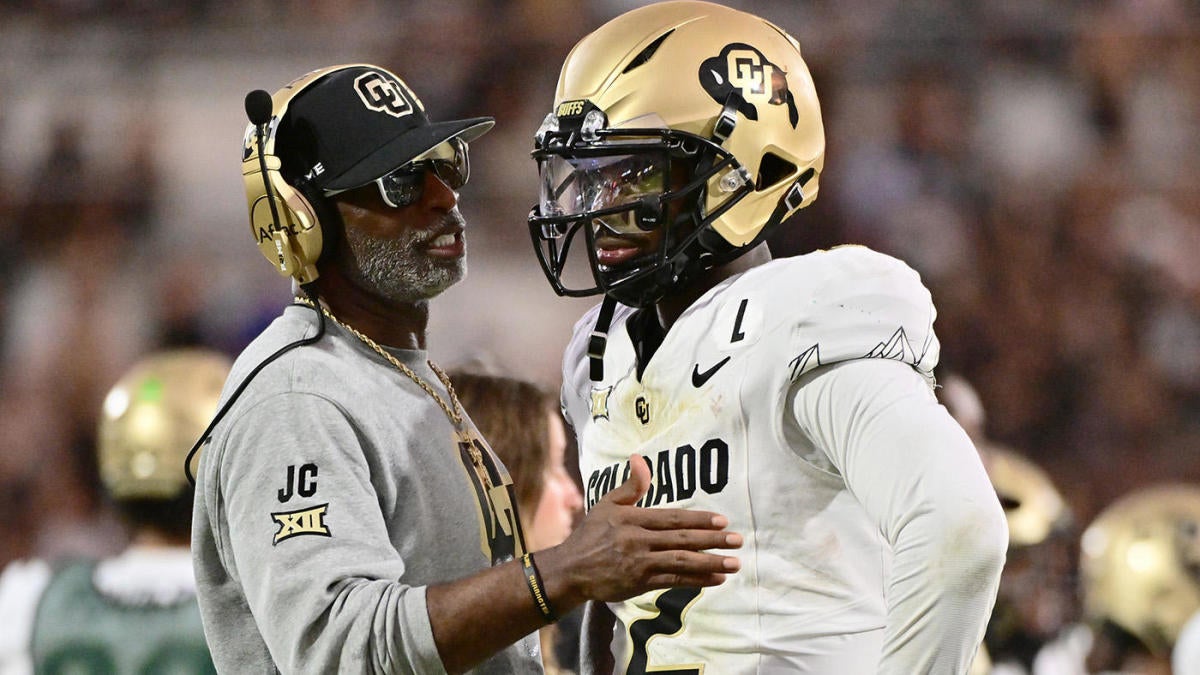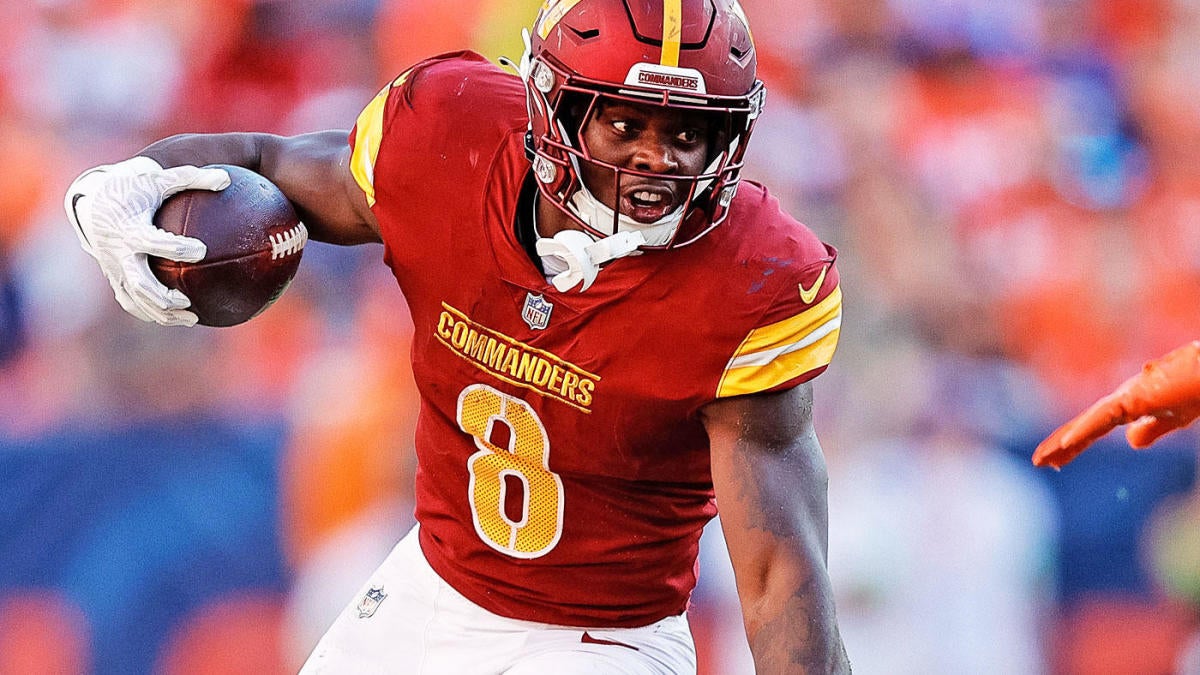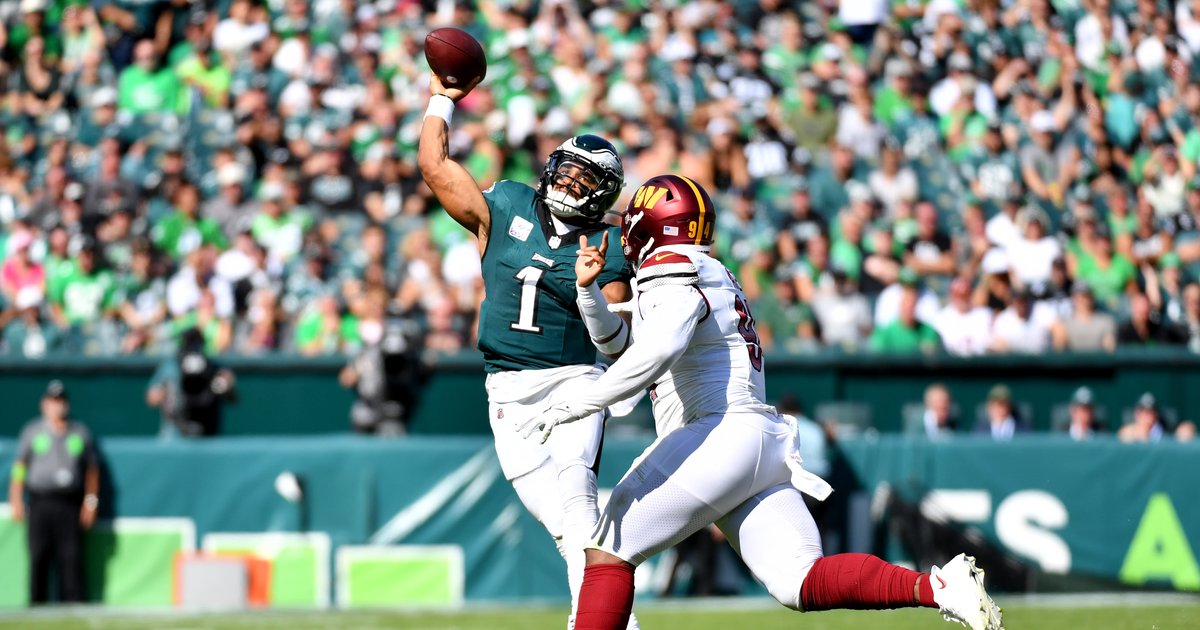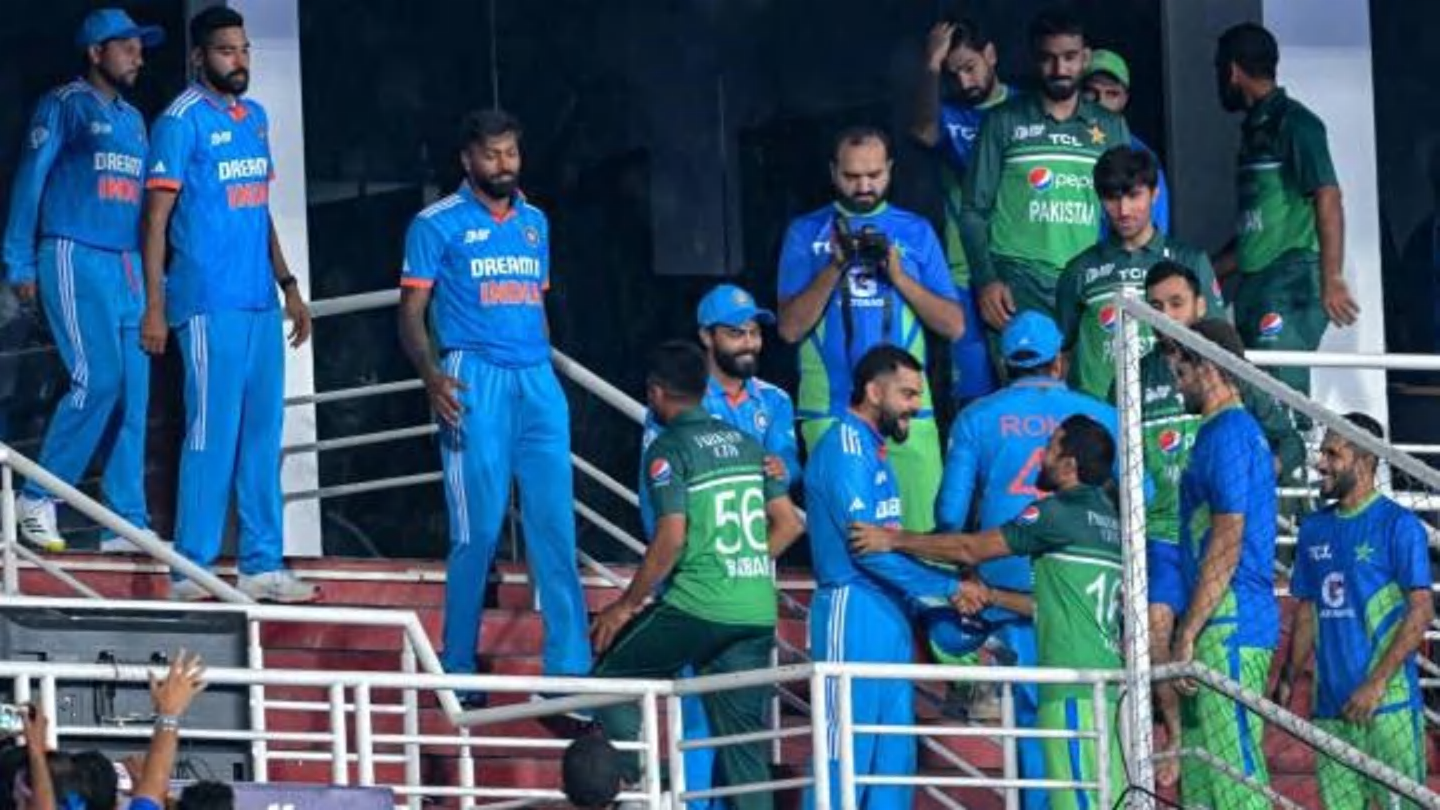Who deserves the blame for why the NFL doesn’t have pylon cams at every game?

The Atlanta Falcons currently sit atop the NFC South standings. Perhaps that wouldn’t be the case if their recent game against the Tampa Bay Buccaneers had pylon cams for a pivotal replay of a touchdown by Kyle Pitts.
Oh no…
It looked like Pitts had his 2nd TD of the day… But did he lose the ball before reaching the endzone??
📺: FOX pic.twitter.com/Wbagh2hT7l
— FOX Sports: NFL (@NFLonFOX) October 27, 2024
As replays looked at the play over and over, it seemed evident to most that Pitts didn’t cross the goal line with the ball. His foot was behind the goal line and his hand was clearly behind his foot when the ball popped out. However, without a definitive (enough) angle, the touchdown stood and the Falcons won the game 31-26, with the questionable score crucial to the result.
A local reporter’s angle later seemed to further make the case the touchdown should have not counted.
I was set up at about the 1.5 yard line during Kyle Pitts’ controversial second touchdown.
So here’s my view of it. I tried to focus into when I believe the ball started to come out. The more I watch this, the more I think the refs got the call of TD wrong. @FOX13News pic.twitter.com/2kbBhM1Ask
— Sean Barie FOX 13 (@SeanBarieTV) October 27, 2024
Even at this angle (which was unavailable to Fox and replay officials), it’s pretty clear Pitts didn’t score. And yet with no pylon cam (something many fans assumed/believed had become standard practice), the touchdown stood.
The fact that such an obvious blown call was missed due to the lack of a definitive replay riled up fans and media members.
Why does the NFL not have pylon cams at every game? How much could that possibly cost?
— Danny Heifetz (@Danny_Heifetz) October 27, 2024
Atlanta-Tampa Bay just proved we need universal pylon cams. Every end zone, every stadium, every game.
— Nick Shook (@TheNickShook) October 27, 2024
In the year of our lord 2024, how is this possible?
Many pointed to Fox, the broadcaster of the game, for not having a pylon cam included in their camera package.
Oh my my my Kyle Pitts that’s BRUTAL. Even if its stands should neverrrrrr be that close.
If that tv crew had a pylon cam I think they would have gone to it right away..
— Jamie Erdahl (@JamieErdahl) October 27, 2024
kyle pitts saved by bucs-falcons being on fox’s c broadcast where they don’t bring pylon cams
— Robby Kalland (@RKalland) October 27, 2024
So what exactly is the the deal? Oddly, there isn’t much published regarding the standardization of pylon cams in the NFL. Is this truly Fox being frugal with a non-national regional game? Do other networks have this blind spot as well? Doesn’t the NFL require pylon cams for replay purposes given the potential for these kinds of officiating mistakes?
The NFL’s Reliance on Networks
Here’s Fox Sports rules analyst Dean Blandino getting into the issue on a podcast.
There was no pylon camera during the #Falcons–#Bucs game on Sunday, which became a big deal after the Kyle Pitts bang-bang touchdown, which might’ve been a fumble thanks to Antoine Winfield’s impressive effort.
I asked @DeanBlandino about it… https://t.co/MgHsvXnSBI pic.twitter.com/3xfIRtfEgV
— Ari Meirov (@MySportsUpdate) October 29, 2024
“I remember early 2000s we looked at that like that. I remember coaches saying we should have cameras on all the boundary lines, right? All the goal lines should be covered, all the sidelines, the end lines, and we still don’t have that,” Blandino told Ari Meirov on NFL Spotlight. “We’re still using the, the networks to provide the cameras and the networks do a great job, but not every crew has pylon cams.
“There’s costs associated with that. I don’t know all the intimate details, but yeah, some games just don’t have pylon cams and that was a play where, had you had a look down the line, I don’t think he scored but you couldn’t change it based on the angles that we had. And so yeah, if you can get pylon cams, if you could get every boundary line covered, then I think you avoid those situations.
“I think the league is looking at that. I think they’re working on that to where, you know, in the near future, we will have those looks because sometimes, a long play, an explosive play that stopped at the 40 going in. You’re not gonna have a camera sitting on the goal line. That’s not a pylon camera, that’s a static camera. And I think that’s something the league will continue to look at.”
So there you have it. The NFL doesn’t mandate the usage of pylon cams and relies on the networks to make the best judgment.
The next logical question is, how many network games don’t have pylon cams? So we asked.
All nationally televised games have the pylon cams. TNF, MNF, SNF, and CBS and Fox’s game of the week are all covered. However with Fox and CBS often broadcasting seven or eight games a week each, an unknown amount of production teams do not have the pylon cams. The number of total cameras used in a broadcast can fall between 14 and 40.
The bottom line is that lesser-watched games available regionally or via Sunday Ticket get Fox’s and CBS’s production teams with fewer cameras.
Does the NFL Deserve the Blame?
Obviously, this impacts teams, coaches, and players. Awful Announcing was told almost all teams will ask before the game about pylon cams so they know about possible usage for challenges. We were also told officials absolutely detest having a game in which they know there are no pylon cams.
“It’s totally unfair to expose some officiating crews to not having the safety net of critical angles for replays,” an individual who works in team operations told Awful Announcing. “They get killed online and harassed when they miss huge calls and the networks and the NFL just let it happen. This is a competitive fairness thing to not just the officials, but the teams themselves.”
“The NFL and networks not figuring this out is absolutely insane,” another former long-term game production individual said. “The Falcons may end up winning the division and hosting a playoff game because of this. Think of how significant that is from a competitive and revenue standpoint. We’re going to potentially let a team host a playoff game because somebody couldn’t pay for a camera?”
Bill Belichick recently joked that maybe the NFL could throw a charity car wash to raise money for the league to get the proper angles covered, similar to ones he’s made several times in years past.
“I don’t understand why this is such a problem & the camera could be clearly mounted on the goal line..
NFL has plenty of money but maybe we gotta have a car wash & raise some money 😂😂
There’s cameras that cover the ENTIRE stadium & I don’t know why we can’t get a camera on… pic.twitter.com/zvxNGmaRoK
— Pat McAfee (@PatMcAfeeShow) October 28, 2024
Should the leagues or individual franchises take the initiative and make the cameras available? Or mandate it to the networks? Some say yes.
“There are certain areas of the field – most notably the goal line and the rest of the end zone – where the league needs to take responsibility for providing the equipment to capture the angles needed to make definitive calls on scoring plays,” said Brandon Costa, the Digital Director of Sports Video Group. “It’s unfair, in my opinion, that so much of the responsibility of having the right cameras in the right places falls on the broadcaster. Other well-known elements like Video Assistant Referee (VAR) in the FIFA World Cup or the Premier League or Hawkeye in a Grand Slam tennis tournament are infrastructures established in the venues by the governing bodies.
“The technology is available and the standard has been established for how video can best support the officiating of the NFL game, but not every game can be covered by a broadcaster with the resources of a playoff game or even a regular season prime-time game. This is an issue not exclusive to the NFL in the United States but in this day and age for the biggest league in the country to have an inequity in the ability to properly officiate a game based on what equipment the game broadcaster brought to cover the game is, in my opinion, no longer acceptable.”
The majority of people we spoke with think networks should be installing the cameras themselves but also believe the lack of a standard falls at the feet of the NFL.
“If the NFL relies so much on these camera angles for replay, why aren’t they helping with the financial burden?” asked one source. “You know the answer to that.”
Awful Announcing did learn that the NFL did increase minimum production standards (including cameras) as part of their last broadcast deals, but this seemed to not specifically include pylon cams.
How Much Does It Actually Cost?
How much the networks and leagues save by not requiring pylon cams was hard to pin down. The closest thing we got to a number was one source saying “It’s more than you think but it’s still pennies for the networks and the NFL.”
Still, we did learn a lot about the history of pylon cams.
Pylon cams started about a decade ago with ESPN developing a version and a company called Admiral Video releasing its own version. The first Super Bowl to use pylon cams was Super Bowl 50 in 2016 on CBS (Broncos vs. Panthers). Not long after, they started to get rolled out to more broadcasts and quickly became commonplace to the point where many watching a home were confused as to why there wasn’t one being used in that Falcons-Buccaneers game.
While Admiral was the early provider of most pylon cams initially, other larger companies have invested in the space. At some point. Admiral soured on the technology due to “liability concerns” and now their website calls them “terrible” and says the patents are for sale (though they apparently helped the owner buy “a nice boat”).
These days, pylon cams and first-down markers are commonplace, not just in the NFL but in college football as well. The two companies that seem to own this space are C360 (now owned by COSM), which ESPN rolled out for the College Football Playoff in 2016, and NEP, whose cameras are used by CBS, NBC, and ESPN, the latter of which uses 7-10 pylon cam sets for college games each week.
If you’re wondering how ESPN can afford 7-1o sets for college football but other networks can’t for the NFL, there seems to be a good answer: Sponsorship. ESPN sold pylon cam sponsorship to brands to help cover the costs.
Sean McDonough making sure ESPN gets that Progressive 💰 pic.twitter.com/vOmC7ENoo2
— Awful Announcing (@awfulannouncing) October 30, 2022
CBS seems to have a sponsor for their pylon cams as well for college football.
The AT&T pylon cam is doing what??? pic.twitter.com/h4YRS9SPTB
— OC (@joconnor20) October 26, 2024
Could the lack of NFL pylon cams be because Fox and CBS couldn’t find sponsors? Or perhaps they’re not allowed? That seems impossible. You’re telling us Chili’s wouldn’t jump all over that? Did you even call them?
It sure seems like brands would gladly pay for the sponsorship as evidenced by college football, which would make it financially feasible for networks to have ubiquitous pylon cams, making everyone happy, including refs, players, owners, viewers, and fans.
It’s possible the NFL’s existing deals with Microsoft include some kind of tech sponsorship exclusivity that prohibits sponsorship is a guess. Who knows.
We’d like to think there are enough smart people to realize the frugalness seemingly in play isn’t worth the headache. Not to mention it’s an awful and indefensible look for a league that is incredibly popular and disturbingly profitable. Let’s hope the right people get in a room and put an end to this madness.
Related
NFL Week 11 staff picks: Moneyline, spread, over/under predictions
Wins and losses are piling up as the NFL schedule rolls along. The vague impression of a playoff picture is starting to reveal itself. Things are heating up
Deion Sanders might break the NFL Draft: Colorado coach vows…
The NFL Draft is usually a pretty simple process: A team picks a player and then that p
Thursday Night Football odds, prediction, spread: Commanders vs. Eagles picks…
A big-time NFC East showdown on Thursday Night Football features the Philadelphia Eagle
Week 11 NFL picks
For the gambling degenerates, here are my Week 11 NFL picks. To note, the team logos indicate who I think will win the game, not cover the spread. At the end of














